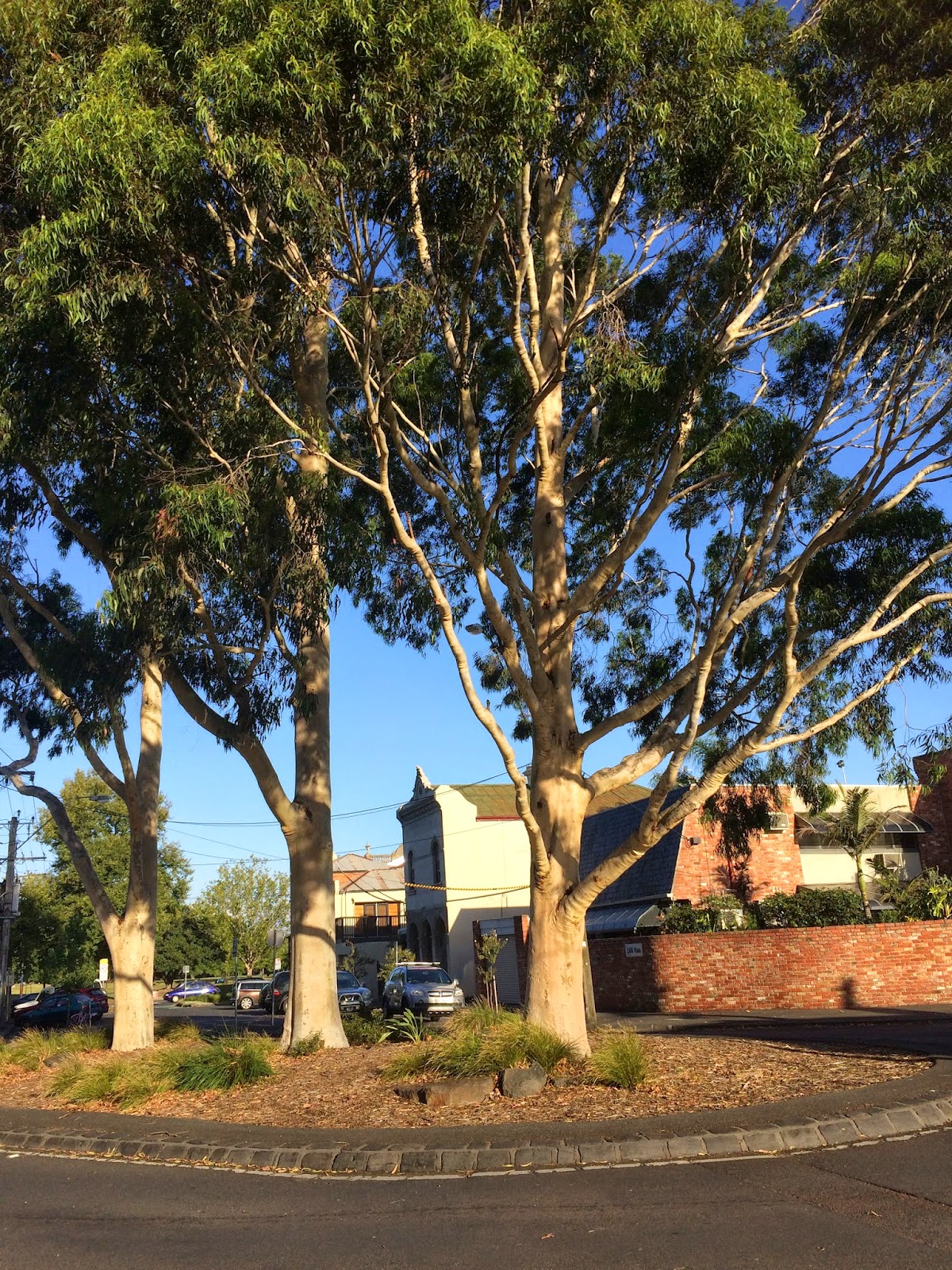That's the first day since I began this project that I didn't blog on a weekday. Oh well. I broke my own rule. But you know what? That's ok. I'm on the point of completing an essay on another project altogether — what happens to glass objects when they are re-formed by intense fire — and writing time seems immensely precious. I do have a deadline for that essay (oh: it's today!) and I am also keen to get started on the next one, which is about the way Middle English texts register changing facial expressions.
But still, here's my Friday (yesterday) post about the bluestone in my garden, and it's a reflection on work and health. The gardeners were very excited about the bluestone slabs they used here, because there are so few lines and whorls in them.
 You can also see the grey of the clouds and one big plop of rain that just landed: it's a still, grey and oppressive morning here. Sometimes we get out and wash the bluestone: it's a little dusty and grimy today as it hasn't rained for a while and there has been lots of summer traffic in the garden.
You can also see the grey of the clouds and one big plop of rain that just landed: it's a still, grey and oppressive morning here. Sometimes we get out and wash the bluestone: it's a little dusty and grimy today as it hasn't rained for a while and there has been lots of summer traffic in the garden.
The builders were also excited about the fall of water over the ledge. They said it's surprisingly hard to get a good fall. It doesn't look all that regular to me now, and it's trickling rather than pouring on the right side. It's quite possible there has been some movement in the ground or the stone.
I love the sound of the water; I love to feed the goldfish; and I love to see the different things that fall in the water at different times of the year: blossom, elm seeds, gingko leaves from the neighbours' tree, little springs of the lemon-scented gum. The first big dig in this garden took place around June 2006. Six months later I was just about finished my radiotherapy treatment for breast cancer. It was a hot summer, but it was always very restful to come and sit in this garden and by this water. I always think it's where I got better.
But still, here's my Friday (yesterday) post about the bluestone in my garden, and it's a reflection on work and health. The gardeners were very excited about the bluestone slabs they used here, because there are so few lines and whorls in them.
 You can also see the grey of the clouds and one big plop of rain that just landed: it's a still, grey and oppressive morning here. Sometimes we get out and wash the bluestone: it's a little dusty and grimy today as it hasn't rained for a while and there has been lots of summer traffic in the garden.
You can also see the grey of the clouds and one big plop of rain that just landed: it's a still, grey and oppressive morning here. Sometimes we get out and wash the bluestone: it's a little dusty and grimy today as it hasn't rained for a while and there has been lots of summer traffic in the garden.The builders were also excited about the fall of water over the ledge. They said it's surprisingly hard to get a good fall. It doesn't look all that regular to me now, and it's trickling rather than pouring on the right side. It's quite possible there has been some movement in the ground or the stone.
I love the sound of the water; I love to feed the goldfish; and I love to see the different things that fall in the water at different times of the year: blossom, elm seeds, gingko leaves from the neighbours' tree, little springs of the lemon-scented gum. The first big dig in this garden took place around June 2006. Six months later I was just about finished my radiotherapy treatment for breast cancer. It was a hot summer, but it was always very restful to come and sit in this garden and by this water. I always think it's where I got better.






















































